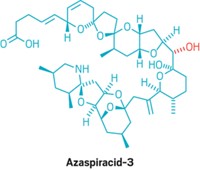Advertisement
Grab your lab coat. Let's get started
Welcome!
Welcome!
Create an account below to get 6 C&EN articles per month, receive newsletters and more - all free.
It seems this is your first time logging in online. Please enter the following information to continue.
As an ACS member you automatically get access to this site. All we need is few more details to create your reading experience.
Not you? Sign in with a different account.
Not you? Sign in with a different account.
ERROR 1
ERROR 1
ERROR 2
ERROR 2
ERROR 2
ERROR 2
ERROR 2
Password and Confirm password must match.
If you have an ACS member number, please enter it here so we can link this account to your membership. (optional)
ERROR 2
ACS values your privacy. By submitting your information, you are gaining access to C&EN and subscribing to our weekly newsletter. We use the information you provide to make your reading experience better, and we will never sell your data to third party members.
Biological Chemistry
Perkin's mauveine mystery
April 30, 2007
| A version of this story appeared in
Volume 85, Issue 18
Two new compounds have been found in museum samples of mauveine, the distinctive purple dye that serendipitously launched the synthetic dye industry 150 years ago (Chem. Commun., DOI: 10.1039/b618926a). In 1856, British chemist William Henry Perkin accidentally invented mauveine while working on a synthesis of the antimalarial drug quinine. The 18-year-old undergraduate subsequently abandoned his studies to commercialize the dye. Perkin was unable to establish the composition of mauveine, but he knew it consisted of more than one aniline-based compound. In 1994, researchers identified two mauveine isomers by NMR spectroscopy. A team led by JoÁo S. Seixas de Melo of the University of Coimbra, in Portugal, now reports using high-performance liquid chromatography to identify two additional mauveine compounds (one shown). The four mauveine compounds now known differ from one another in the number of methyl groups (two, three, or four) and their locations. The team confirmed its findings by using Perkin's original mauveine recipe to synthesize and characterize a new sample.








Join the conversation
Contact the reporter
Submit a Letter to the Editor for publication
Engage with us on Twitter